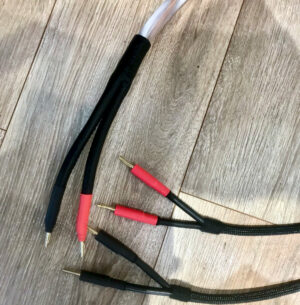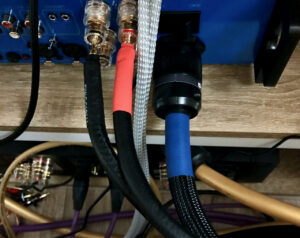
If you read my story, you will understand I have participated in the music and sound industry for many years. And during those years have learnt many things when it comes to sound and sound quality. It has been over sixty years since I first held my fathers’ guitar, and I still remember that day as if it were yesterday. But how could I have known it would take me to what I am doing now?
Audiophile cables
A cable can have many wires or optical fibres twisted together to make a larger wire. Some cables contain both electrical wires and optical fibres. Many kinds of cables, including coaxial cables, block out radio or magnetic interference from other wires or cables by having one wire inside an insulated tube surrounded by a second wire, acting as a metal tube along the same axis. Also, electrical cables are usually made of copper because electricity moves well through copper, but it is less expensive than silver or other better conductors.
Sound different
When a particular cable (made from copper) and another cable (made from copper) are heard, how can they sound different? Also, if a Power cable is made from copper, and a second is made from copper, how can they also sound different? And this is one of the reasons why there is so much controversy regarding audiophile cables. Also, the person listening to a particular cable must have perfect listening to appreciate the audio cable fully.
Cable construction

Your Amplifier
Your amplifier is doing its job to amplify the signals coming from the speaker cables. And if one of the signals is slightly different from the other, then there will be a difference in the sound heard at the loudspeakers. And for the same reason, if the interconnect cables are different, the sound heard by the loudspeakers will be different. Also, the sound will be affected if you use a different Digital cable. So each time you change a cable, your system sound will change.
Power cables

Different strokes
Now we have two types of cables doing different tasks but working together to improve your system sound. The Power cables clean the electrical energy to suit the components. The interconnects and speaker cables allow the signals to reach each piece with the least resistance and obstruction possible. Thereby improving the system sound. And so it goes on. The more you change cables, the greater these differences become.
Where to start
What is the benefit of replacing the cables supplied with your equipment? Why should you consider taking this step? Two good questions, and let me explain. The cables provided with your equipment certainly do their work well. And allow you to hear your music in an entirely audible manner. And give you great value for your money. But, if you decide you want a better listening experience, then replace the power cable supplying your source component. If you like what to hear, replace the power cable providing the power amplifier power.
Cable costs

Conclusion
Before you spend any money, the best thing to do is follow our system set-up procedure, as this alone will improve your sound. Next, set a budget, buy the power cable first, and follow the above paragraph’s steps. Do everything step by step, as it takes time to understand what you are doing and why you are doing it! But have FUN because isn’t this why we are becoming an audiophile?
Author: Paul A Goodwin, professional audio service
Dated: 11/04/2023
Perkune I Best budget audiophile cables